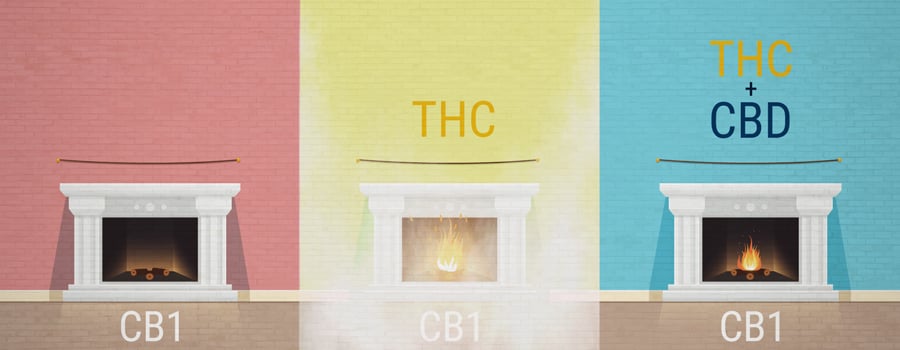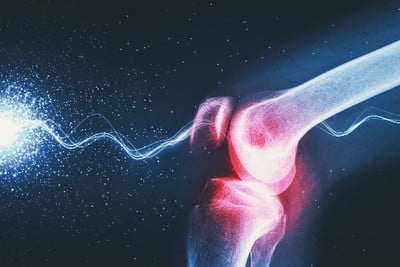.

Is Cannabidiol (CBD) Truly Non-Psychoactive?
While many cannabis consumers are familiar with CBD as the predominant non-psychoactive cannabinoid, is this a characteristic supported by science? Read on to find out if CBD is truly non-psychoactive.
If you’re an avid cannabis user, you are likely familiar with the two most popular cannabinoids, tetrahydrocannabinol, simply known as THC, and cannabidiol, aka CBD. You also probably know that the former cannabinoid is psychoactive, which means it’s primarily responsible for inducing the “high” that many cannabis users know and love. CBD, on the other hand, is believed to be non-psychoactive after a comprehensive review by the World Health Organization[1] (WHO).
For decades, breeders and cultivators produced strains with the goal of higher and higher THC content. Indeed, there are now varieties that feature 30%+ THC levels, which is far from the 5% THC of most strains from days gone by. Today, however, breeders are champing at the bit to create CBD-rich strains for recreational and medicinal users alike.
But the question remains; does CBD have zero effects on the human brain and psyche? We aim to delve into this topic further and explore what it means for a cannabinoid to be psychoactive.
CANNABINOIDS AND PSYCHOACTIVITY
You may wonder why THC can get you “high” while CBD cannot. The answer lies in how these two cannabinoids interact with CB1 receptors, which are mainly concentrated in the brain and central nervous system. CB1, along with CB2, are endogenous receptors in the endocannabinoid system (ECS). Simply put, THC binds with CB1 receptors like a key in a lock. While CBD does not appear to exhibit the same trait according to research[2] in the _British Journal of Pharmacology_.
THC molecules are correctly shaped to bind to CB1 receptors, and once connected, they immediately stimulate these receptors. Specifically, THC partially mimics anandamide, which is more commonly known as “the bliss molecule”. Anandamide is a neurotransmitter and endocannabinoid that is naturally produced in the brain. Anandamide is thought to influence everything from appetite and memory to inhibiting breast cancer cell proliferation.
CBD, on the other hand, is considered an “antagonist” to CB1 receptors. While more research is needed to determine exactly how this mechanism works, Canadian researchers[3] proposed that CBD is a negative allosteric modulator of CB1. It acts more to suppress the qualities of THC that activate these receptors, which ultimately minimises its psychoactive effects. Essentially, CBD limits THC’s psychoactivity “ceiling”, which is why strains with both CBD and THC are frequently said to offer the best of both worlds for the average consumer.
THE CBD “HIGH”?
CBD may not have psychoactive traits per se, but it could still influence our brains, albeit in a different way to THC. In the same research that showed THC mostly binds with CB1 receptors, it found that CBD is more connected to CB2 receptors. These are found in the peripheral organs and skin, particularly in cells that are linked to the immune system.
Research conducted in 2011 at the University of Sao Paulo in Brazil set out to investigate the impact of CBD[4] on certain brain chemicals. They found it to activate adenosine receptors, which are essentially responsible for regulating cardiovascular functions, coronary blood flow, and myocardial oxygen consumption. The adenosine receptors also regulate both the dopamine and glutamate levels in the brain. Therefore, while CBD can’t get you high, it could have a psychological impact as a consequence of its mechanism of action.
Studies are now looking to see if the mechanisms of CBD show any potential in conditions such as PTSD[5], schizophrenia[6], epilepsy[7], rheumatoid arthritis[8], and nausea[9].
THE ENTOURAGE EFFECT
Ongoing studies are searching for possible synergistic relationships between cannabis constituents, including cannabinoids and terpenes—a phenomenon known as the entourage effect[10].
Understanding precisely how these ratios can be manipulated is something researchers are working hard to understand. In fact, they have gone as far as to acknowledge that future studies may expose "an extensive pipeline of new therapeutic products is possible from this venerable plant".
Pure THC, for instance, can cause some anxiety and stress because of its potent psychoactive effects. Investigations are underway to see if CBD could offset these adverse effects[11] through the endocannabinoid system and beyond.

WHICH STRAIN IS RIGHT FOR YOU?
The THC:CBD ratio of a cannabis strain needs to be taken into account when determining the right strain for you. Strains like Royal Cookies that contain 23%+ THC and a low CBD content are the ones usually selected by those seeking the most intense “high” possible. However, these THC-rich strains may be overwhelming for other users. Strains like Fast Eddy, however, which only features 9% THC and 12% CBD are the ones that will give a more balanced experience—something becoming more and more popular among modern users.
So, is it valid to conclude that CBD is indeed non-psychoactive? It’s true that cannabidiol alone will not provide a “high”, yet the overall effects of CBD on both the psyche and body are indeed notable.
As the world becomes more educated about cannabis and its real effects on the human body and mind, we get to discover more about the plant and its components. At the same time, experts in the field have learned to develop a means to efficiently use THC and CBD together. The future only looks brighter for cannabis culture and the worldwide cannabusiness.
- https://www.who.int/medicines/access/controlled-substances/CannabidiolCriticalReview.pdf
- The diverse CB1 and CB2 receptor pharmacology of three plant cannabinoids: Δ9-tetrahydrocannabinol, cannabidiol and Δ9-tetrahydrocannabivarin https://www.ncbi.nlm.nih.gov
- https://bpspubs.onlinelibrary.wiley.com/doi/full/10.1111/bph.13250
- The anxiolytic-like effects of cannabidiol injected into the bed nucleus of the stria terminalis are mediated by 5-HT1A receptors - PubMed https://www.ncbi.nlm.nih.gov
- Cannabidiol disrupts the consolidation of specific and generalized fear memories via dorsal hippocampus CB 1 and CB 2 receptors - PubMed https://pubmed.ncbi.nlm.nih.gov
- Cannabidiol as an Adjunctive Treatment for Schizophrenia https://www.psychiatrictimes.com
- Frontiers | Potential Clinical Benefits of CBD-Rich Cannabis Extracts Over Purified CBD in Treatment-Resistant Epilepsy: Observational Data Meta-analysis | Neurology https://www.frontiersin.org
- Cannabidiol as an emergent therapeutic strategy for lessening the impact of inflammation on oxidative stress - PubMed https://pubmed.ncbi.nlm.nih.gov
- Cannabidiol, a non-psychotropic component of cannabis, attenuates vomiting and nausea-like behaviour via indirect agonism of 5-HT(1A) somatodendritic autoreceptors in the dorsal raphe nucleus - PubMed https://pubmed.ncbi.nlm.nih.gov
- Taming THC: potential cannabis synergy and phytocannabinoid-terpenoid entourage effects https://www.ncbi.nlm.nih.gov
- SAGE Journals: Your gateway to world-class journal research https://journals.sagepub.com











































